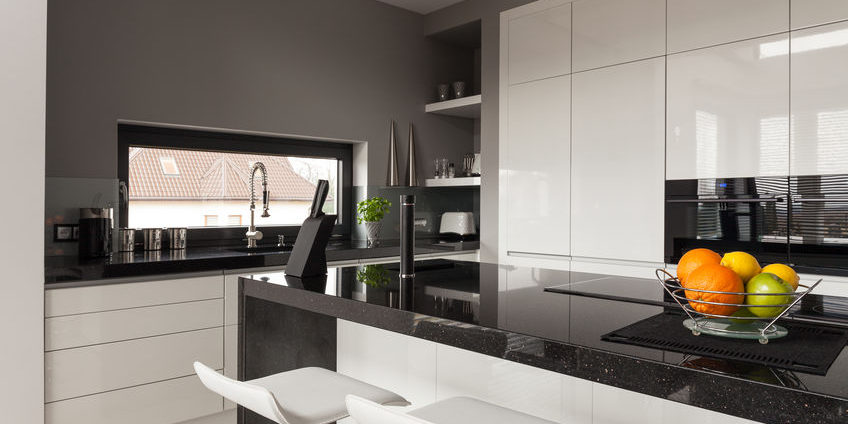When considering natural stone for your countertops, you’re likely most interested in the colour, pattern, and type of material to best suit your needs. There’s another choice to make, however: the surface thickness. For decades, the industry standard for natural stone countertops was ¾” (2 centimetres), but more recently, 1 ¼” (3 centimetres) countertops have been gaining popularity. With appearance, durability, cost, and personal taste to consider, your ultimate decision may not be as simple as you’d think. Read on to discover the pros and cons of 1 ¼” and ¾” slabs.
Appearance
In some ways, the difference in appearance between ¾” and 1 ¼” countertops is negligible—and subjective. If you’re looking for a countertop with a chunkier, heavier feel, it’s true that the 1 ¼” slab is a full third thicker than the traditional ¾” cut, but this is actually only 1 centimetre of additional depth. The effect is visible, but may not be as striking as you’d expect. Additionally, counters can be “beefed up” with a laminated edge profile instead of a thicker surface stone.
Durability
While an argument can be made that 1 ¼” countertops are more durable than 1 ¾” surfaces, this really only applies to cracking—a rare problem with counters in either thickness. Other aspects of durability like heat resistance, staining, watermarks, and so forth will not be affected by the thickness of the stone. With a ¾” slab, however, there is an additional recommended step to installation: the substrate. This piece of plywood is placed under the countertop at the time of installation, and is intended to provide additional strength and support to the install. The thinner counters may also require piecing and lamination.
While an argument can be made that 1 ¼” countertops are more durable than ¾” surfaces, this really only applies to cracking—a rare problem with counters in either thickness. Other aspects of durability like heat resistance, staining, watermarks, and so forth will not be affected by the thickness of the stone. With a ¾” slab, however, there is an additional recommended step to installation: the substrate. This piece of plywood is placed under the countertop at the time of installation, and is intended to provide additional strength and support to the install. The thinner counters may also require piecing and lamination.
Cost
All other things being equal—that is, that the countertop in either case would be from the same natural stone—there are two financial concerns to consider. The first is the price of the stone itself and indeed, the thicker the slab, the more it will cost. The second is the cost of installation. Should you choose the thinner surface and choose to install a substrate, the labour hours can add up to more than with a thicker stone. This is the prime reason why some homeowners and contractors are steering away from ¾” surfaces.
Personal taste
As with all things to do with your home, personal taste plays an important role in renovation or construction decisions. While a thicker, more robust surface is currently on-trend, that may not be the look you desire. Alternately, you may want something extra chunky—and in this case you might consider stacking ¾” or 1 ¼ counters. Remember though, that many different visual effects can be achieved through edging and laminates and need not come directly from the stone itself.
Choosing the thickness of your natural stone countertops will ultimately come to down a balance of appearance, durability, cost, and personal taste, with an emphasis on the latter two variables. Whichever decision you ultimately make, you can be sure that your surfaces will add beauty and longevity to your kitchen or bathroom.








